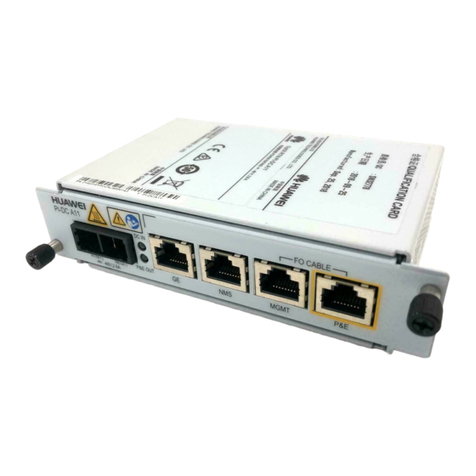OptiX RTN PI-DC B20
Product Overview and Installation Guide
Issue: 07
Date: 2018-10-30
Huawei Technologies Co., Ltd.
Address: Huawei Industrial Base
Bantian, Longgang
Shenzhen 518129
People's Republic of China
Website: http://www.huawei.com
Email: support@huawei.com
No part of this document may be reproduced or transmitted in any form or by any means without prior
written consent of Huawei Technologies Co., Ltd.
Copyright © Huawei Technologies Co., Ltd. 2018. All rights reserved.
01
Safety Precautions
•Customer equipment connected to the GE electrical ports of outdoor PIs must have surge protection
capabilities. If customer equipment does not have surge protection capabilities, PIs must be installed indoors.
•Do not touch the connector terminals or pins of P&E cables or DC power cables. Instead, hold the insulation
parts of the cables.
•Prevent conductors or hands from touching the terminals or pins in the P&E ports and DC input/output ports on
PIs.
•Before installing a DC input power cable on a PI, identify the positive and negative ends of the cable. Ensure
that the cable is connected correctly. Install a circuit breaker at the negative end of the external power supply
device to prevent circuit loops from damaging the power cable and PI.
•Before installing a DC output power cable on a PI, identify the positive and negative ends of the cable. Ensure
that the cable is connected correctly. Do not connect the output port of the external power supply device to the
DC output port of the PI.
•Do not connect the output port of the external power supply device to a P&E port of the PI.
•Do not install any cables when devices are powered on.
•When making and installing cables, avoid dropping any metal scraps or other miscellaneous objects into a PI.
•After setting DIP switches, switch off the power supply. After waiting for 6 seconds, switch on the power supply
again.
HUAWEI TECHNOLOGIES CO., LTD .




























